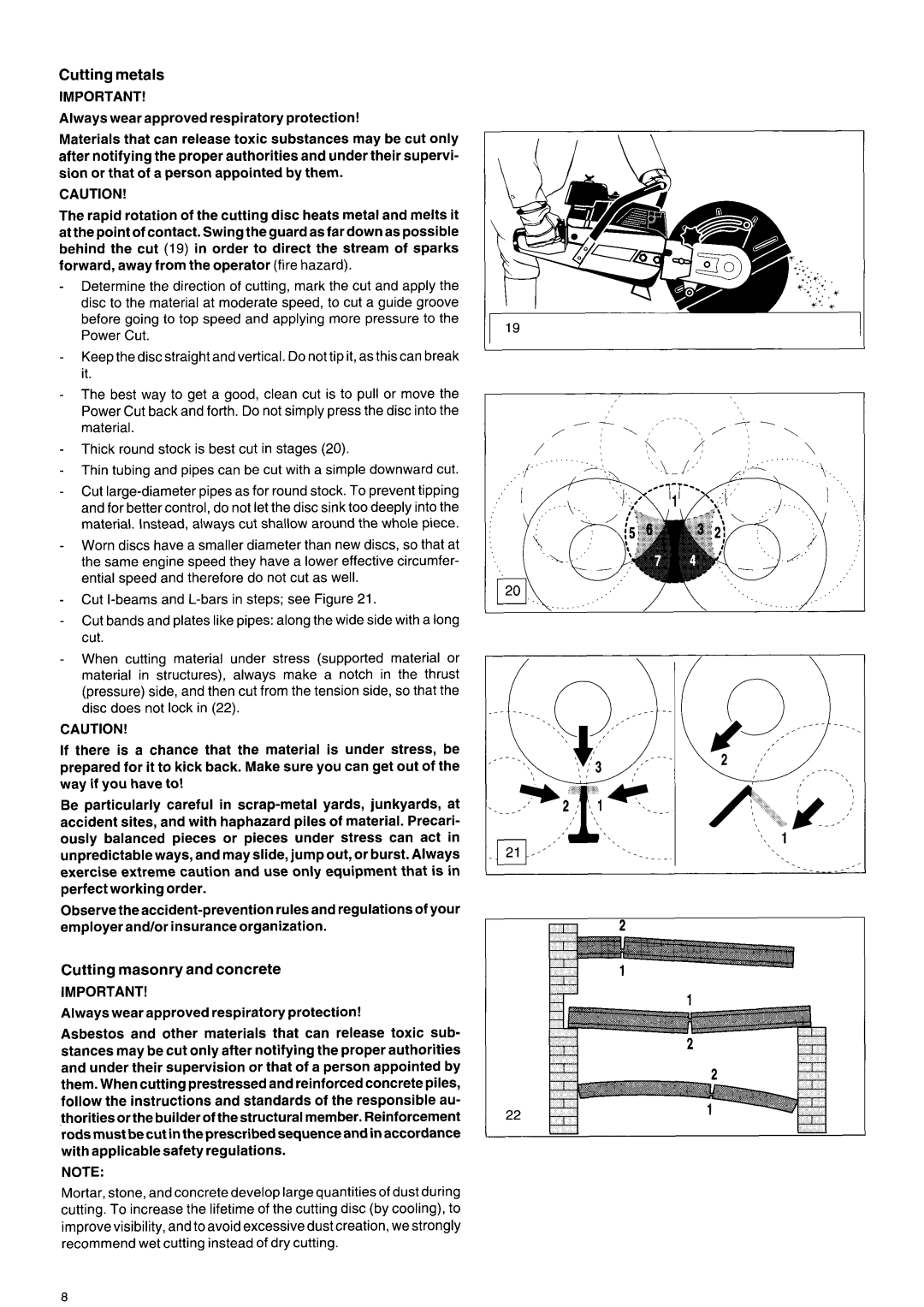
Cutting metals
IMPORTANT!
Always wear approved respiratory protection!
Materials that can release toxic substances may be cut only after notifying the proper authorities and under their supervi- sion or that of a person appointed by them.
CAUTION!
The rapid rotation of the cutting disc heats metal and melts it at the point of contact. Swing the guard as far down as possible behind the cut (19)in order to direct the stream of sparks forward, away from the operator (fire hazard).
Determine the direction of cutting, mark the cut and apply the disc to the material at moderate speed, to cut a guide groove before going to top speed and applying more pressure to the Power Cut.
Keepthediscstraightandvertical. Donottipit, asthiscan break it.
The best way to get a good, clean cut is to pull or move the Power Cut back and forth. Do not simply press the disc into the material.
Thick round stock is best cut in stages (20).
Thin tubing and pipes can be cut with a simple downward cut.
Cut
Worn discs have a smaller diameter than new discs, so that at the same engine speed they have a lower effective circumfer- ential speed and therefore do not cut as well.
Cut
Cut bands and plates like pipes: along the wide side with a long cut.
When cutting material under stress (supported material or material in structures), always make a notch in the thrust (pressure) side, and then cut from the tension side, so that the disc does not lock in (22).
CAUTION!
If there is a chance that the material is under stress, be prepared for it to kick back. Make sure you can get out of the way if you have to!
Be particularly careful in
Observe the
Cutting m a s o n r y a n d concrete
IMPORTANT!
Always wear approved respiratory protection!
Asbestos and other materials that can release toxic sub- stances may be cut only after notifying the proper authorities and under their supervision or that of a person appointed by them. When cutting prestressed and reinforced concrete piles, follow the instructions and standards of the responsible au- thoritiesorthe builder of thestructural member. Reinforcement rods must becut inthe prescribed sequence and inaccordance with applicable safety regulations.
NOTE:
Mortar, stone, and concrete develop large quantities of dust during cutting. To increase the lifetime of the cutting disc (by cooling), to improve visibility, and to avoid excessive dust creation, we strongly recommend wet cutting instead of dry cutting.
I
I
l9
/\
./. . . . .
22
